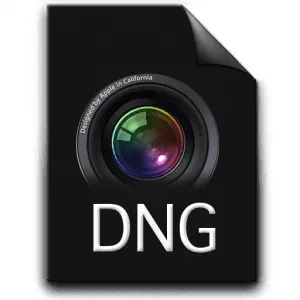In this article, you’ll learn:
In fact, digital photography has a “RAW problem” - there are too many different formats.
Few years ago OpenRAW initiative announced a manifest to determine possible solutions. First one, camera manufacturers should publish documentation of RAW formats (past, present and future) or, second one, industry should adopt a universal RAW format. The problem was pointed out!
Later in 2004, in an effort to standardize RAW camera files, Adobe published first version of Digital Negative specification. This openly documented format made support of different RAW formats much easier for third-party software developers. Now DNG is used in more than 240 software products and supported as a native format in more than 50 cameras.

DNG is similar to manufacturers’ RAWs, but:
- it is based on the open TIFF/EP format and totally well documented;
- embed XMP, color profiles and a bunch of embedded JPEG previews;
- average file is up to 20% smaller because of effective algorithms;
- has better structure for parallel processing, as a result we have faster opening;
- has unique hash for verification of data corruption;
- still is not supported by all manufacturers and not fully supports proprietary metadata, but DNG has been submitted to become an ISO Standard, so it’s here to stay.
So why do I prefer to use DNG? There are a few sufficient reasons:
- Simplicity. DNG is simple as a file. All data is written in the same place of file. You don’t need to worry about XMP containing your post-processing instructions, JPEG previews and raw data it is stored in one place, always inside your DNG file.
- Archiving. The DNG format is independent, open and well documented. Will you be able to find a RAW converter 10 years from now when your camera becomes unsupported? Great reason to choose DNG for long term storage.
- Economic. As I mentioned, DNG lossless compression algorithms are better than used by the camera, so DNG files are generally smaller than proprietary RAWs. It makes sense when your library contains thousands of images and when you tend to use a cloud storage, for example.
- Embedded Previews. Have you ever thought why previews and actual images are different after post-processing in your favorite editor? Like proprietary formats DNG contains embedded preview. But with this format you are the boss you can vary size of the preview, update it in any time without touching the original data. It means that previews look like your edited raw data.
- DNG Hash is one of the most promising features. It is a special tag written into files that can be used for validation, data corruption checking or even unique identifying files.
DNG is not a standard but rather a specification. Nevertheless, a lot of companies (ex. Apple, Corel, Extensis, Hasselblad, Leica, Pentax, Ricoh and Samsung) already added DNG support to their cameras and products. Future progress relies on standards.
P.S.: One more thing. DNG is also fancy. Just like D&G.
Image by zobbit
Interested in our content? You might also want to read other articles devoted to photography. Start from Best Storage Device For a Photographer and A Myth about Photo Enhancement.



